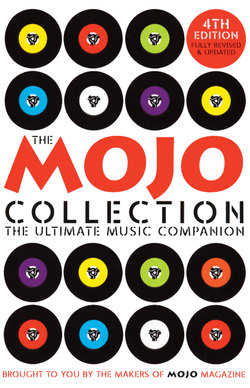Читать книгу The Mojo Collection - Various Mojo Magazine - Страница 38
James Brown Live At The Apollo (Vol. 1) A benchmark for thrilling soul performance, and the first of Brown’s enormous selection of live albums.
ОглавлениеRecord label: Polydor
Produced: James Brown
Recorded: Apollo Theater, New York; October 24, 1962
Released: May 1963 (UK) January 1963 (US)
Chart peaks: None (UK) 2 (US)
Personnel: James Brown (v); Bobby Byrd, Bobby Bennett and Baby Lloyd Stallworth (v); Lewis Hamilton (t, m); Roscoe Patrick and Teddy Washington (t); Dickey Wells (tb); St Clair Pinckney and Clifford MacMillan (ts); Al ‘Briscoe’ Clark (bs); Lucas ‘Fats’ Gonder (o); Les Buie (g); Hubert Perry (b); Clayton Fillyau (d)
Track listing: I’ll Go Crazy; Try Me; Think; I Don’t Mind; Lost Someone; Please, Please, Please; You’ve Got The Power; I Found Someone; Why Do You Do Me Like You Do; I Want You So Bad; I Love You Yes I Do; Why Does Everything Happen To Me; Bewildered; Please Don’t Go; Night Train
Running time: 31.36
Current CD: Polydor 5498842 is a 2-disc re-sequencing of the entire original concert complete with between-song banter and previously unheard songs.
Further listening: Say It Live And Loud/Live In Dallas (1998), a coruscating performance from August 26, 1968
Further reading: James Brown (Geoff Brown, 1996); Live At The Apollo 33 1/3 (Douglas Wolk, 2004); www.godfatherofsoul.com
Download: iTunes
Some people can’t recognise a good thing when it falls in their lap. Syd Nathan, the label boss of King Records in Cincinnati, wasn’t convinced by James Brown. ‘The worst piece of shit I’ve ever heard’ he declared in 1955 upon hearing Please, Please, Please. Released to embarrass Ralph Bass, the A&R man who had brought Brown to Nathan’s attention, Please, Please Please – that contradiction in terms, a hard-driving ballad – gave King a Number 6 R&B hit in 1956. The nine ‘failures’ that followed only confirmed Nathan in his doubts. He had big reservations, too, about Try Me, a song getting great reactions on tour, and released it spitefully, to prove Brown’s instincts wrong. It soared to Number 1 in the US R&B charts (48 pop). Henceforward, Brown charted as the seasons changed, at least four singles a year on the R&B charts and as many on the Hot 100. By 1962 ‘Mr Dynamite’ was the biggest live draw in the R&B market, his physically athletic and dramatic performances matched by impassioned ballads, relentless uptempo numbers and a tightly-drilled band. All this, suggested Brown and his manager, Ben Bart, should be caught live on tape. Still surprisingly indifferent to his star’s power, Nathan’s reply was, in effect, Over my dead body.
Undaunted, Brown put up $5,700 of his own money to record a show at Harlem’s black music mecca, the Apollo. His season there began on October 18, 1962 and by the night of the 24th the band was in blistering form, delivering a finely-honed set of their hits to date with Brown blasting from one song to the next with scarcely a pause for breath. For his core black audience it provided a vivid souvenir of Mr Dynamite in his pomp – and for whites it was an ear-boggling introduction to a thrilling kind of performance rarely seen or heard. As Brown (then still only 29) sails through the first five tracks, varying the pace but not the emotional intensity, you’d swear you can hear the sweat spraying out of his pores. With Live At The Apollo James Brown became – and would remain for many years to come – The Hardest Working Man In Showbusiness.
